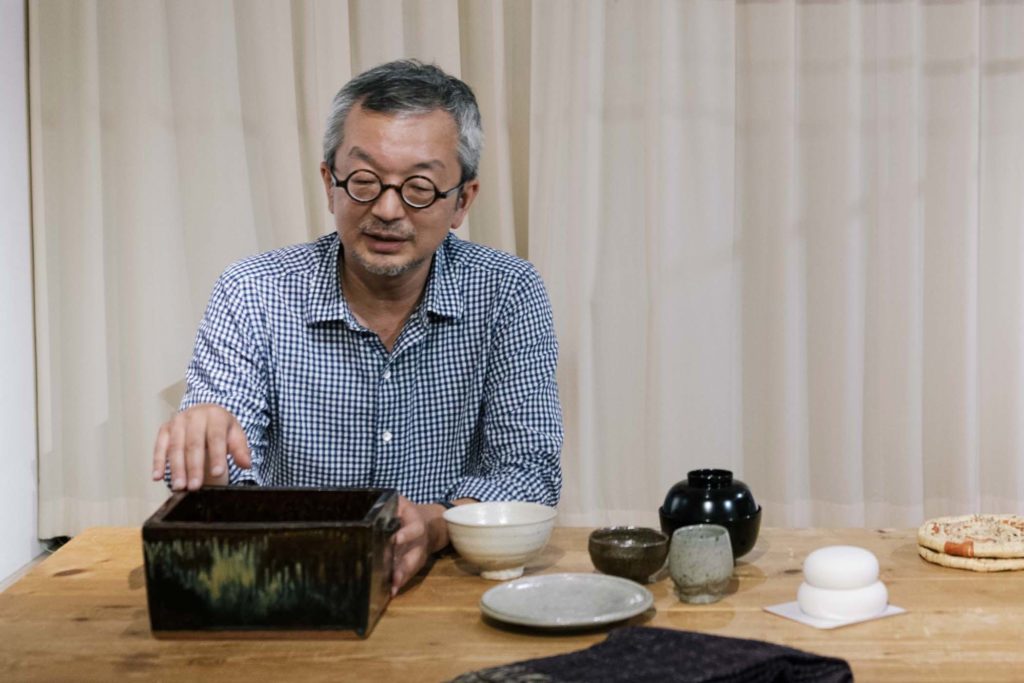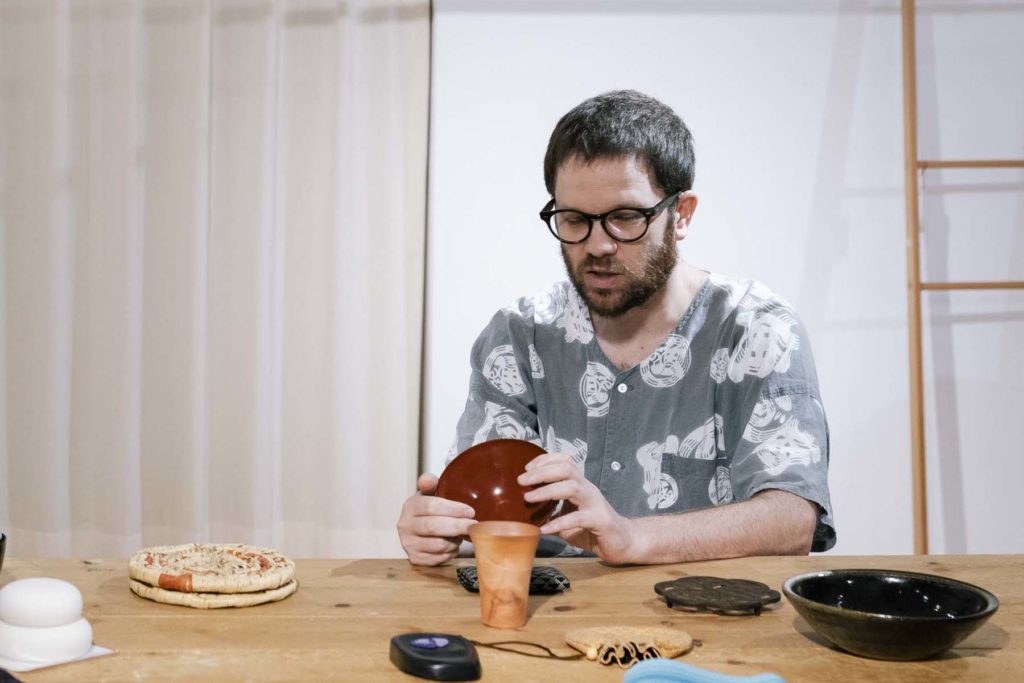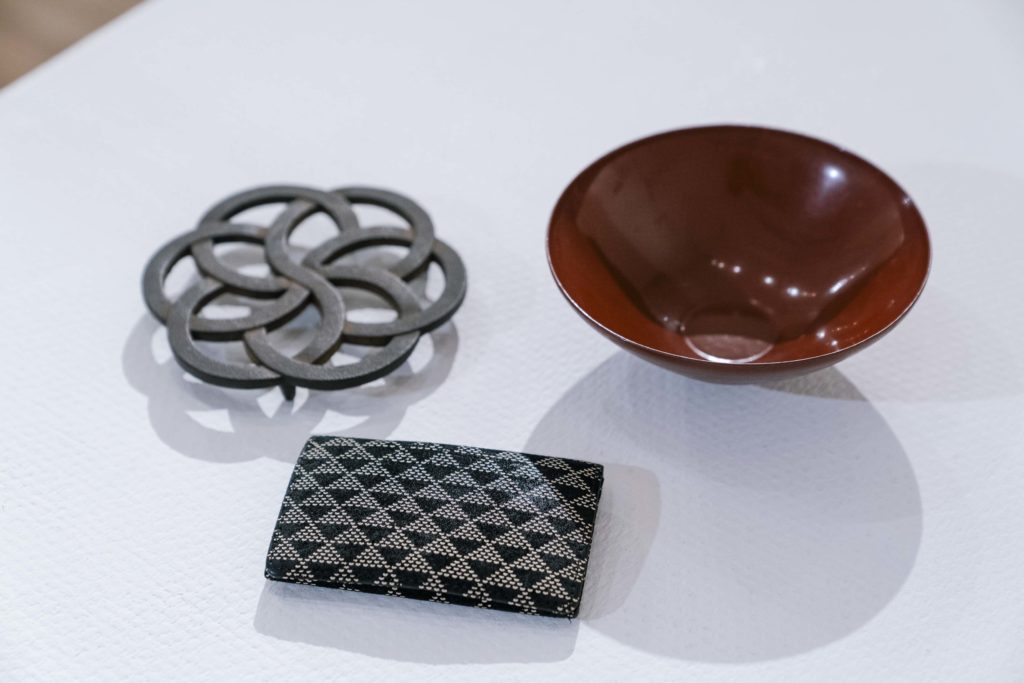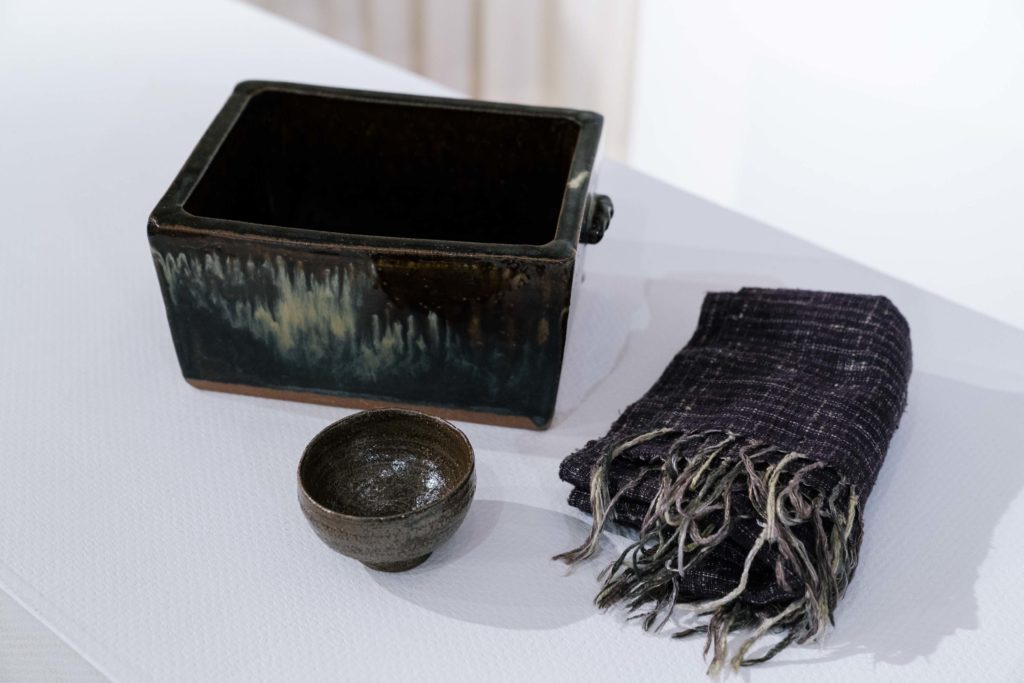ーーWhat sparked your interest in Japanese craft objects?
Takeo Okuma (Okuma):I worked in interior and furniture for a long time, but back then I was always looking outside Japan. The furniture shop that I managed came to carry books, too, and I discovered the book Shonen Mingeikan. That set off my fascination with the world of folk craft and traditional craft. The economy in Japan was also picking up, and I might have been somewhat fed up with the quickly growing trend of design consciousness. I felt like revisiting Japanese folk craft and traditional craft, and selecting exceptional objects. This led to the opening of CLASKA Gallery & Shop “DO” 12 years ago.

Lucas B.B. (Lucas):I came to Japan in 1993, and I got the impression that many people were looking overseas and paying little attention to all the remarkable things they had at home, including crafts. The image of Japan for many foreigners was still only samurai, sushi, and geisha. I was convinced that it would be exciting if both foreigners and Japanese got to know more about Japanese culture, and in ’96 I launched the magazine TOKION. In the United States, there are native Americans who make traditional crafts, but white people who came to America just over 200 years ago have a shallow history when it comes to crafts. Whereas in Japan, every visit to a rural area presents an enchanting craft with a long history. For me, covering Japanese crafts became a motive in its own right for exploring the different regions.

Okuma:Crafts naturally reflect the climate of the originating region. Japan has four distinct seasons, too, which might help accentuate the local characteristics.
ーーWhat do you look for when selecting a craft object?
Okuma:In a word, I look for simplicity. This is true of the products we carry at DO as well. I look for objects with the potential to fit in with our real contemporary lifestyle.
Lucas:I also like to imagine how I would use the object myself. Take this piece of Wajima lacquerware. I bought it on a trip covering the city of Wajima. Because I wasn’t all that familiar with urushi lacquer to begin with, I asked to see the whole process, from tapping the sap of the lacquer tree. It gave me a sense of time traveling and taught me how precious lacquer is. I also learned that in the old days, people used lacquered as we would use plastic today. It was an amazing material that could be dropped and not break, and was lightweight and simple in design. Normally, Japanese people use lacquer for soup or rice, but I thought it would be fun to serve yogurt or ice cream in the unique shaped bowel that i selected. She choosing items; I like to form mental pictures of the possible uses i would have for the item.

Okuma:This large pot is a piece of Aizu Hongo ware. I bought it when I was first nurturing my interest in crafts. I had read an article about Yanagi Soetsu’s travels to discover mingei folk crafts, and this was given as an example of his findings in the Aizu region. It’s a utensil designed for making a local dish of Aizu called pepper pickled herring, and so it’s commonly known as a “herring pot.” That isn’t all. The square corners of ceramics are prone to chipping, but this is deliberately made with sharp corners so that it kindles a desire to take good care of the pot. I heard this from the potter. Anecdotes like this ignite your sense of attachment to the object, don’t they? I have never made pepper pickled herring, though. I use this pot for storing my pipe kit.

Lucas:With some objects, you have to use it to appreciate its true quality. I once reported on a Bizen ware artist, who gave me a Bizen ware cup that made beer taste incredibly good. That made me curious to know how the cup was made so thin and delicate, and it gave me the pleasure of discovering the creativity that went into the piece—such subtle creativity that you only notice with use is fascinating, it’s low key technology that is only discovered via use.
Okuma:Events like this provide a good opportunity to visit stores nearby and discover local crafts from up and down Japan. Fashion stores nowadays are expected to sell not only clothes but also a lifestyle, so there’s good reason for these stores to offer crafts that fit in with their taste. I know firsthand that craft objects enrich my daily life. I hope many more people can wallow in that sensation now, when we are valuing the time we spend at home.
Lucas:I can feel the affection and love that the craft’s person put into the making of the object and those vibrations are ‘good vibrations’ that i can feel every time i use the object.
Okuma:We the user can feel that affection, and that develops into our attachment to the object. That’s the allure of crafts.











